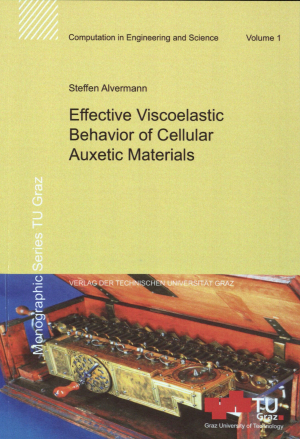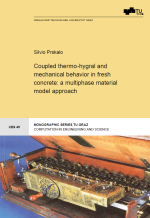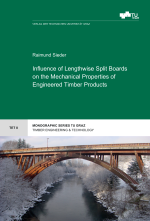This work is concerned with the calculation of effective, macroscopic
material parameters of materials with an inhomogeneous microstructure.
On the microscopic scale, the calculation of a representative volume
element of the material is done taking dynamical effects into account.
This makes it possible to study damping effects on the macroscopic
scale. The microstructures to be analyzed are mainly composed of
trusses. They are calculated with a newly developed boundary element
formulation, which delivers analytical exact results. A special interest
is put on microstructures which, because of their deformation
mechanism, cause a negative Poisson’s ratio of a material on the
macroscopic scale (auxetic materials). The calculation of adequate
macroscopic material parameters is done with different optimization
techniques. Beside the classical gradient-based optimization procedures,
also softcomputing methods like Genetic Algorithms and Neural Networks
are used. A number of numerical examples are presented where effective
viscoelastic material parameters are calculated. The Genetic Algorithm
turned out to deliver the most reliable results in the homogenization
process, wheras the gradient-based methods may fail due to the existence
of local minima in the optimization function.
Issue: Open Access E-Book
ISBN: 978-3-85125-241-5
Language: Englisch
Release date: December 2012
Series: Monographic Series TU Graz / Computation in Engineering and Science, Issue Vol. 1
This work is concerned with the calculation of effective, macroscopic
material parameters of materials with an inhomogeneous microstructure.
On the microscopic scale, the calculation of a representative volume
element of the material is done taking dynamical effects into account.
This makes it possible to study damping effects on the macroscopic
scale. The microstructures to be analyzed are mainly composed of
trusses. They are calculated with a newly developed boundary element
formulation, which delivers analytical exact results. A special interest
is put on microstructures which, because of their deformation
mechanism, cause a negative Poisson’s ratio of a material on the
macroscopic scale (auxetic materials). The calculation of adequate
macroscopic material parameters is done with different optimization
techniques. Beside the classical gradient-based optimization procedures,
also softcomputing methods like Genetic Algorithms and Neural Networks
are used. A number of numerical examples are presented where effective
viscoelastic material parameters are calculated. The Genetic Algorithm
turned out to deliver the most reliable results in the homogenization
process, wheras the gradient-based methods may fail due to the existence
of local minima in the optimization function.




